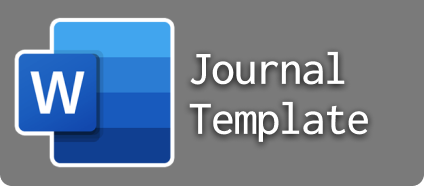ANALISIS LOGAM TIMBAL DAN TEMBAGA TERHADAP DAYA SERAP RUMPUT LAUT Gracilaria sp. SEBAGAI BIOSORBEN
DOI:
https://doi.org/10.22373/amina.v1i2.40Keywords:
Gracilaria sp. seaweed, adsorbent, lead (Pb), copper (Cu), AAS (Atomic Absorption SpectrophotometerAbstract
Seaweed Gracilaria sp. is a water plant which is included into the red algae group (Rhodophyceae) which can potentially reduce the grade of metals Pb and Cu concentration. This research is aimed to know the heavy level of Pb and Cu metals which is adsorbed in seaweed Gracilaria sp. and the effect on the adsorption power of Pb and Cu metals based on variations in time of contamination. This research was done destructed by refluks destruction with resolvent HNO3: HClO4 (2:1) 15 mL. Thetime variations were 1, 2 and 3 weeks. The solvent of destruction obtained was measured by AAS (Atomic Absorption Spectrophotometer). The results are the grade of Pb metal on seaweed in the initial status concentration is obtained 1,2344 mg/L, 1,2820 mg/L in the first week, 1,2642 mg/L in the second week and 2,3149 mg/L in the third week. Based on the findings, it can be concluded that the grade levels of Pb Metal in seaweed Gracilaria sp. has already passed the BPOM No. 23 of 2017 standards setting is 0,20 mg/L. In the other hand, the grade levels of Cu metal on seaweed in the initial status concentration is obtained 0,0001 mg/L, 0,1579 mg/L in the first week, 0,5120 mg/L in the second week and 0.7946 mg/L in the third week. Based on the findings, it can be concluded that the grade level of Cu metal on seaweed Gracilaria sp. has already passed the limit which is conditioned by BPOM No. 03275/B/SK/VII/1989 is 0,1 mg/L.
References
Downloads
Published
Issue
Section
License
Amina Journal a uses license CC-BY SA
Amina Journal uses license CC-BY-SA or an equivalent license as the optimal license for the publication, distribution, use, and reuse of scholarly works.
This license permits anyone to compose, repair, and make derivative creation even for commercial purposes, as long as appropriate credit and proper acknowledgement to the original publication from Amina Journal is made to allow users to trace back to the original manuscript and author.
Readers are also granted full access to read and download the published manuscripts, reprint and distribute the manuscript in any medium or format.






















